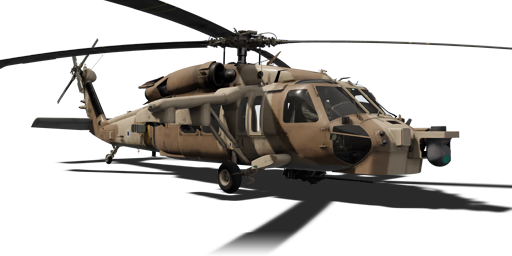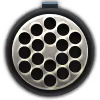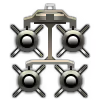



Dating back to tests in the 1980s, the Israeli Air Force had been very interested in an alternative to their Bell-212 "Anafa" (Hebrew: Heron), thus beginning their long history with the UH-60 "Black Hawk". With about 50 in service as utility aircraft for logistics duties, it was a landmark in the IAF helicopter fleet. In recent years, the demand for more options to meet surface threats increased and thus the decision was made to buy armed versions of the platform. This model represents the upgraded UH-60L co-manufactured by Elbit Systems for the Colombian army with the designation AH-60L Arpía IV and showcased in 2008 as the "Armed Blackhawk Demonstrator", also nicknamed "Battle Hawk".
Introduced in Update "Alpha Strike", the AH-60 marks a new helicopter chassis available to the Israeli tech tree in form of the iconic Sikorsky "Black Hawk". With this new platform, new options open up for anyone choosing to tread down this part of the tech tree. Access to up to 16 of the Spike F&F ATGM in conjunction with the AGM-114K Hellfire 2 in mixed loadouts is the main appeal of this helicopter. Additionally it features a higher rate-of-fire underslung GIAT M621 cannon than its counterparts at the battle rating. The AH-60 "Yanshuf" (Hebrew: Owl) marks a viable alternative to its AH-64 competitors and a step-up in every regard to the MD-500 "Lahatut" preceding it in the tech tree.
| Belt | Belt filling | Armor penetration (mm) at a distance: | |||||
|---|---|---|---|---|---|---|---|
| 10 m | 100 m | 500 m | 1000 m | 1500 m | 2000 m | ||
| P/HEF-I/HEF-I/API-T | 40 | 36 | 22 | 12 | 6 | 3 | |
| HEF-I/API-T | 40 | 36 | 22 | 12 | 6 | 3 | |
| HEF-I/HEF-I/HEF-I/API-T | 40 | 36 | 22 | 12 | 6 | 3 | |
| API-T/AP-I/AP-I | 40 | 36 | 22 | 12 | 6 | 3 | |
| HEF-I/HEF-I/HEF-I/AP-I | 40 | 36 | 22 | 12 | 6 | 3 | |
| Name | Weight | Slot | ||||||
|---|---|---|---|---|---|---|---|---|
| 7 × | 101.1 kg |  |  |  |  | |||
| 19 × | 231.6 kg |  |  |  |  | |||
| 7 × | 148.8 kg |  |  |  |  | |||
| 2 × | 128.3 kg |  |  |  |  | |||
| 4 × | 198.5 kg |  |  |  |  | |||
| 2 × | 106 kg |  |  |  |  | |||
| 4 × | 154 kg |  |  |  |  | |||
| 2 × | 20.2 kg |  |  |  |  | |||












Flight performance |
|---|
Survivability |
|---|
Weaponry | |||
|---|---|---|---|